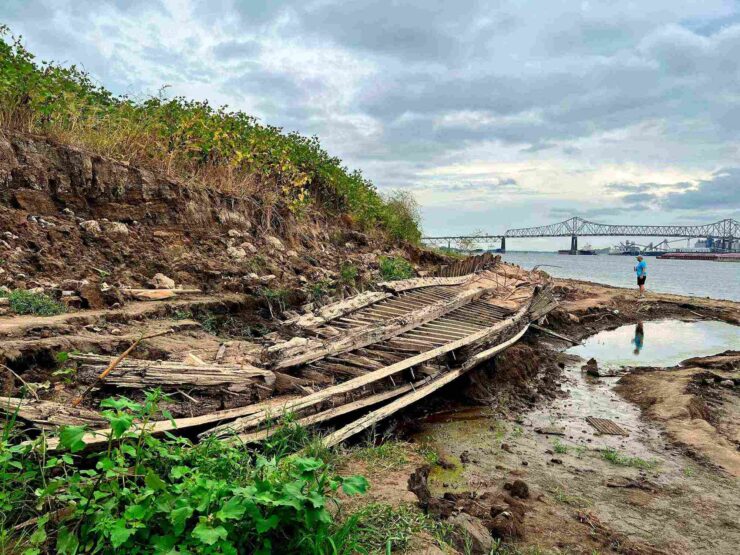As water levels drop, a shipwreck has appeared along the Mississippi River’s banks in Baton Rouge, Louisiana. Water levels threaten to drop to record levels in some areas.
Earlier this month, a Baton Rouge citizen who was strolling along the shoreline found the ship, which archaeologists believe to be a ferry that went down in the late 1800s or early 1900s. The discovery is the latest to surface from ebbing waters caused by drought. The Lake Mead National Recreation Area’s summer receding waters uncovered a number of skeleton remains, many dried-out fish, a cemetery of abandoned boats, and even a sunken World War II era craft that had surveyed the lake.
The ship will eventually return to the ocean, according to Chip McGimsey, the Louisiana state archeologist who has been studying the wreck for the past two weeks. She might not be there the next time, so that’s part of the reason we’re going to great lengths to document it.
Before significant bridges spanned the great Mississippi, McGimsey speculates that the ship may have been the Brookhill Ferry, which presumably transported people and horse-drawn wagons across the river. Newspaper archival records show that a severe storm caused the ship to sink in 1915.
However, this is not the first time the ship has been disclosed by low water levels. According to McGimsey, minor pieces of the vessel were exposed in the 1990s.
“At that time the vessel was completely full of mud and there was mud all around it so only the very tip tops of the sides were visible, so archaeologists really didn’t see much other. They had to move a lot of dirt just to get some narrow windows in to see bits and pieces,” McGimsey said.
According to NBC News‘ report, given that he has already received inquiries about two additional potential shipwrecks, McGimsey anticipates finding more wrecks as the water levels continue to drop.
However, the unusually low water level in the Mississippi River, where there has been below-average rainfall since late August, has also caused chaos. Barges have become stuck in mud and sand, which has resulted in waterway restrictions from the Coast Guard. Shippers, recreational boaters, and cruise ship passengers have all had their river travel disrupted.
According to the National Weather Service, the river in Baton Rouge is at its lowest level since 2012 and is around 5 feet deep.
It seems that the drought in the world in general will reveal more archaeological value.
